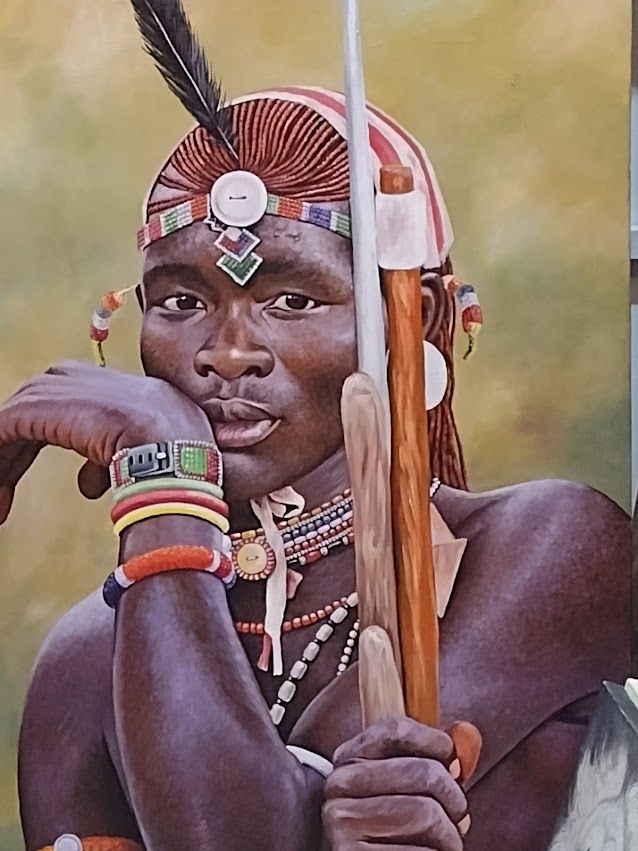
The remarkable, unsung talent hidden in one of Tanzania's more lively local markets
The women called out to me softly as I came closer, "madam, madam," begging me to enter their stalls. The last two years have been terribly hard on them, as Covid stripped Tanzania and much of Africa of its tourist trade. As a regular traveler to this part of the world, I am concerned about how the pandemic has affected the people, whose livelihood so often depends on folks like you and me.
Eddie Laswai, who is the chef and manager of Researcher's Rest where I am staying, took me to the Maasai Market yesterday to do some shopping but also to see what has been happening to that community.
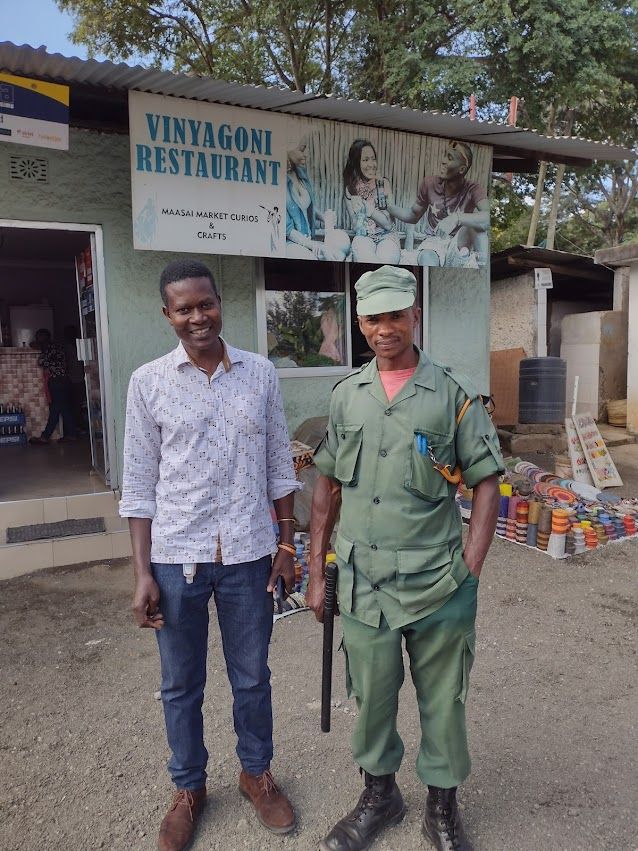
First, it's important to set the stage. I've been coming to Africa since 2000, and have watched the prices of souvenirs soar as the locals increasingly try to patronize to the uber-rich. That's done several things. First, there are many more very expensive shops which feature much the same kind of product but at vastly higher prices. Guides can often get a commission by taking you there, which helps them, but if you're on a budget like I am, it's a waste of time other than for window-shopping.
The same is true in Kenya, for example where a guide will steer you to the "best shops" which is often code for higher prices and where he can get a commission. I don't argue their right to make a living, but one of the side effects is a vast increase in prices for things that only very recently were just a few bucks.
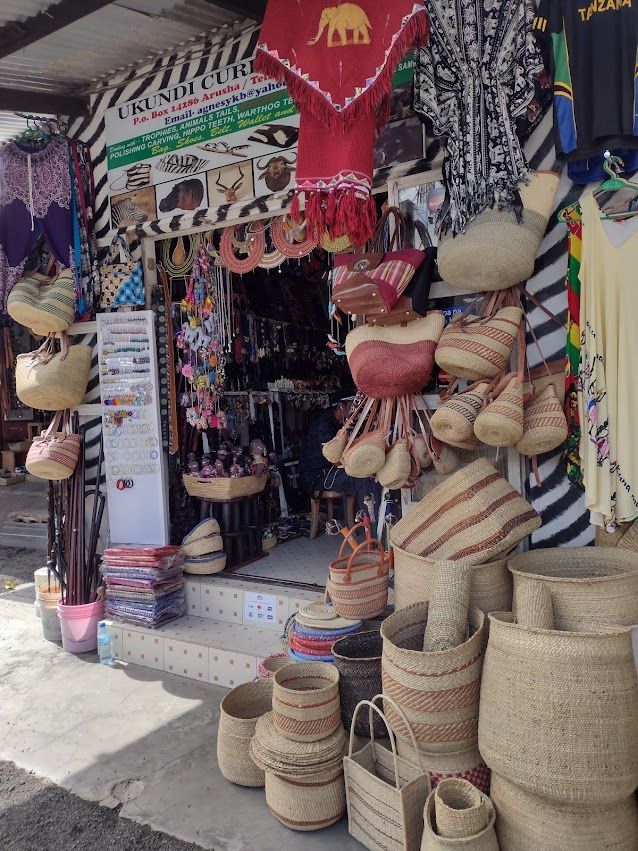
Then there is the Maasai Market. Places like this still exist, and they are very much worth sussing out. For while most of the stalls feature the same kinds of carved goods and fabrics you might find anywhere, a sharp eye and a smart guide can help you negotiate for some very good deals.
The market is centrally-located. All the locals know where it is. It's a squared-off lot set up with narrow stalls, terribly limited parking, and that parking is further limited by those Maasai women for whom there is no stall or they can't afford to rent one. They set up their wares on the bare ground, much the same way as the local Indigenous people lay out their silver and turquoise on The Square in Santa Fe, New Mexico.
Eddie told me as we parked that he had taken another woman tourist here a while back. Covid had made the proprietors desperate, and as a result, she was mobbed. That terrified her, and Eddie had to take her back to the guest house, to everyone's deep disappointment. Eddie then had a conversation with the guard (above), who has been there for 12 of the 15 years of the market's existence.
The guard explained to the stall owners that if they wanted to sell to tourists, it would be wiser to let the tourists move unimpeded, and make their own selections without fearing for their safety, the need for sales notwithstanding.
Eddie stayed with me, patient as the day can be long, to help translate, negotiate, and if things got pushy, intermediate. Happily not too many folks were overly eager, although when we got there there were few tourist vans. That changed as we took our slow way long four long rows of small stalls, beginning outside.
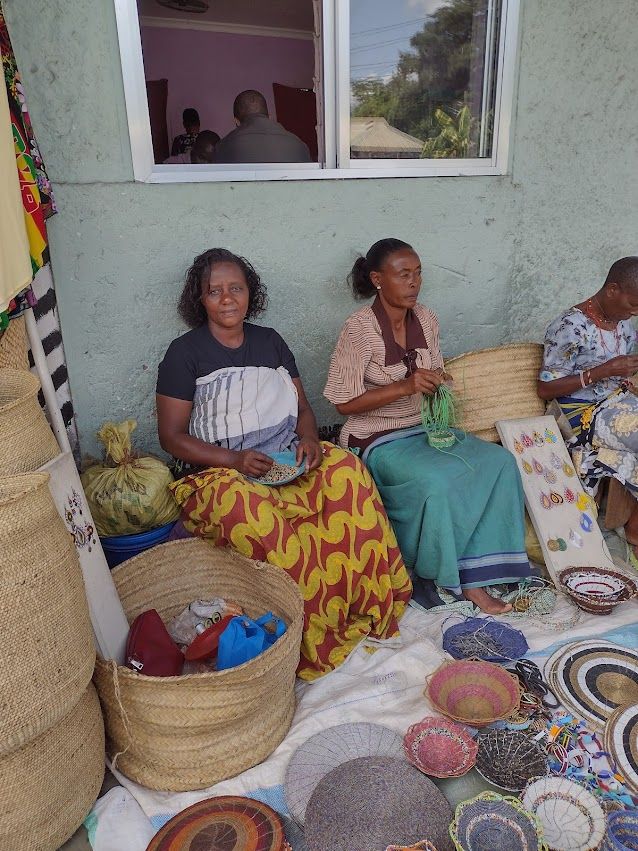
There, the women, looking tired and worn in the afternoon heat, explained to me through Eddie that the Covid times had been terrible on them and their families. Most waved their hands gently in the air to ask me to view their goods. Sadly, I already have so much of this stuff, and little room in my bag going home, that my choices were limited. If I was going to get something it would have to be pretty spectacular.
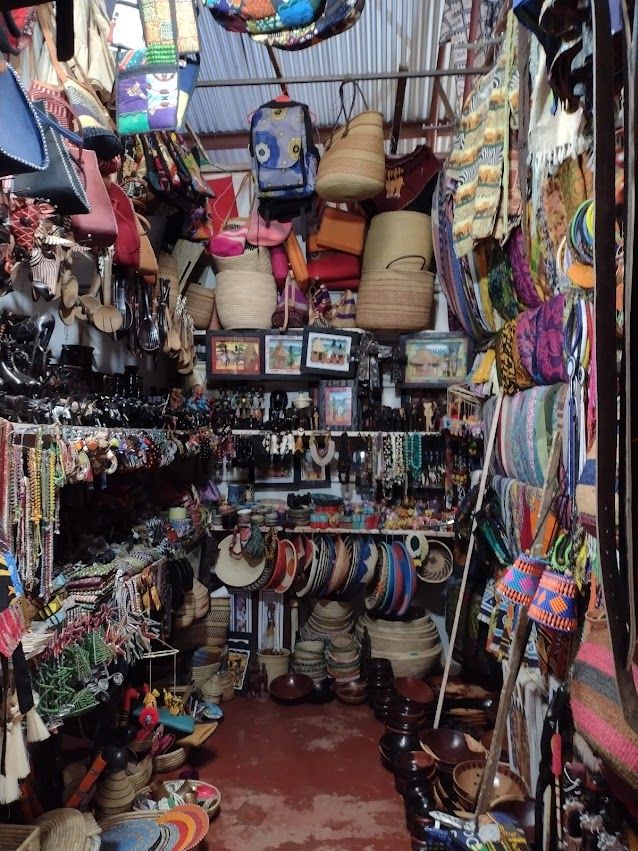
Most of the shops had similar, if not identical offerings. Soapstone animals, baskets, wire weavings, carvings, and beads. There are all kinds of fabrics and clothing along with leather sandals and often inventive gift ware.
The first stall which caught my eye was that of a young artist whose work was riveting. Here he is next to some of his work:
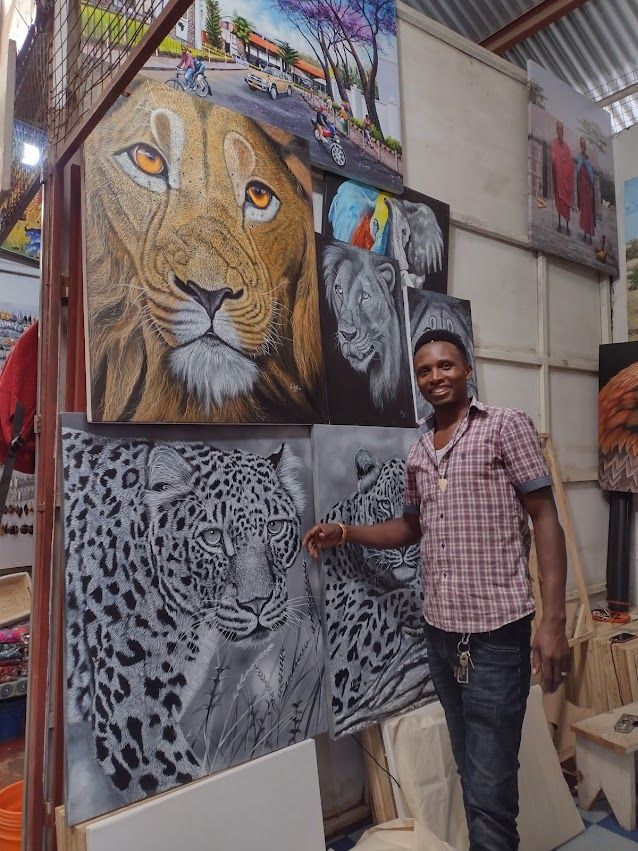
Several of his pieces caught my eye, if for no other reason than how dramatic they were, and the level of realism. I've spent a lot of time in the bush, and the cats often have flies crawling on their fur. He added those for realism. Any fan of the Dutch style from the Seventeenth Century would appreciate this. You can appreciate the intensity of this art:
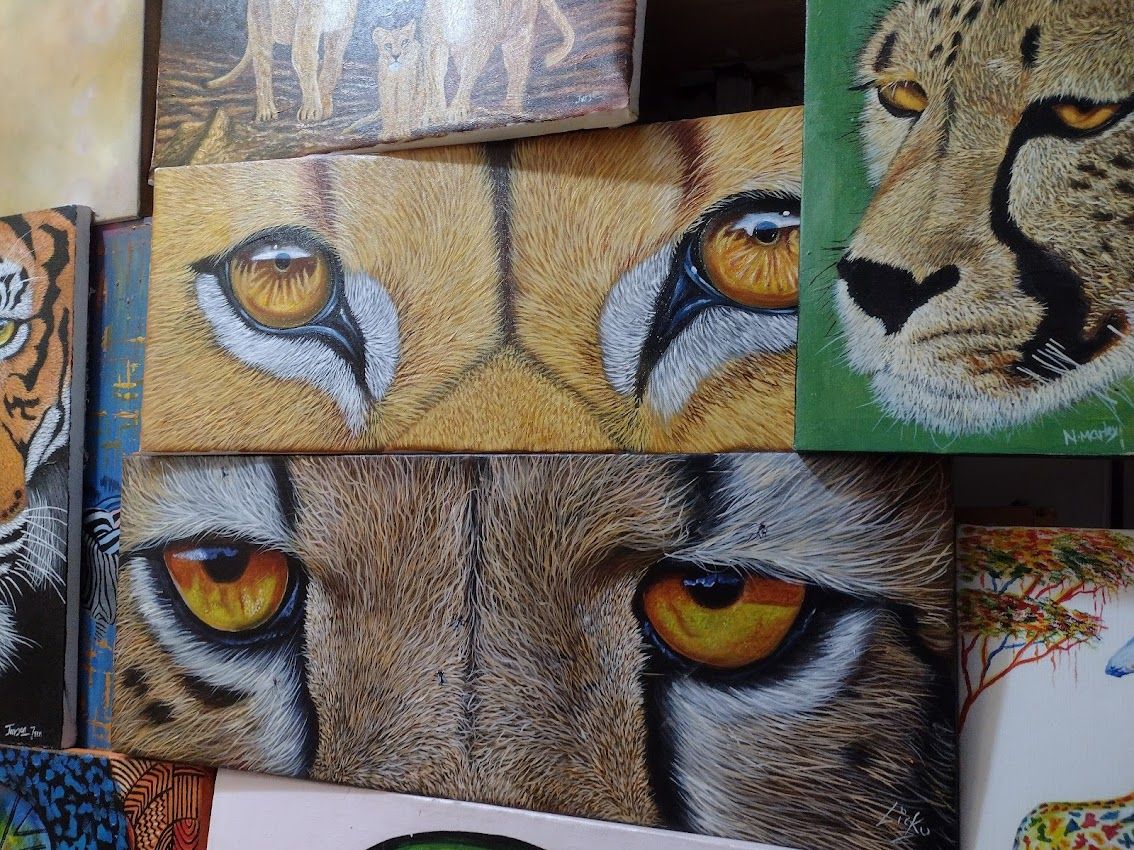
I am an artist, a lousy one, but still, and both Eddie and I were very impressed. We both had to take a photo of this painting of a young boy about to let loose with his slingshot:
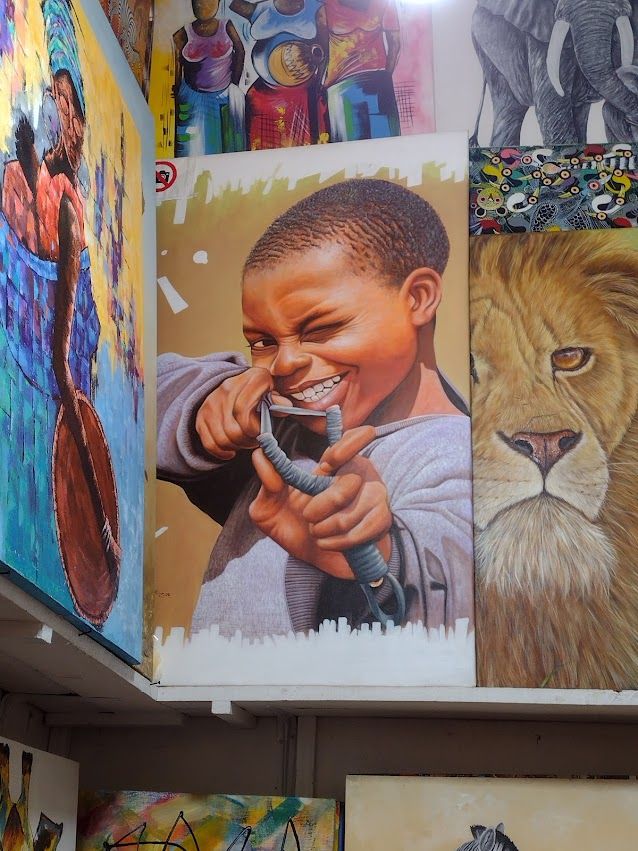
While most of the stalls carried many of the same items, every so often I would stumble on the artist himself, like the painter, or the brother of the better painter. The young man, above, had populated other stalls with some of his work, which became easily recognizable. I really loved those intense eyes, and the quality of his work. All I could think was that he, and a few other people whose art was displayed ( as with the top photos) needed to be discovered and displaying their pieces in better environments.
In one case I found the woodcarver:
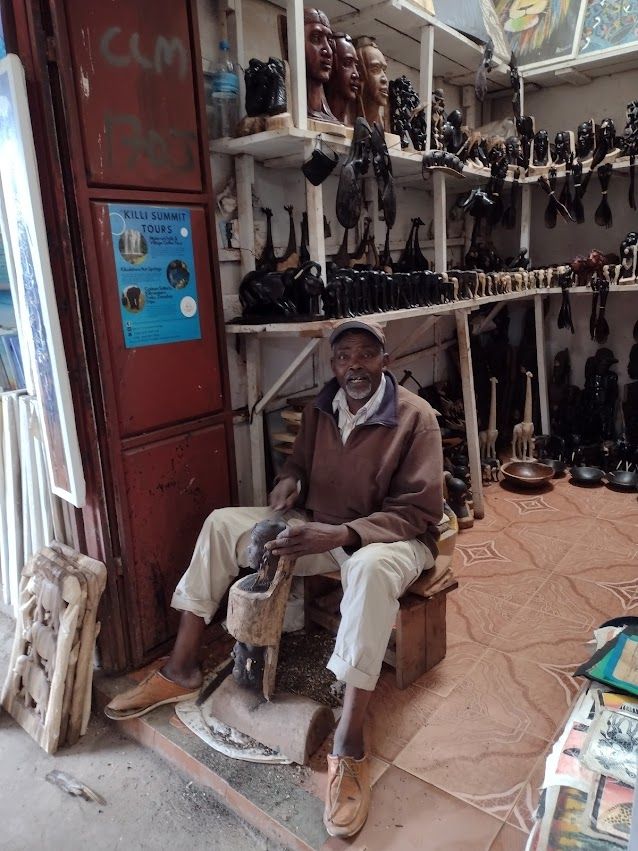
In such cases I try to buy from the person who does the work directly as I am most guaranteed that the money will go to that person and their family. Not always, but I can hope. Either way I feel very good when I get to meet the person who made what I found so lovely I had to bring it home. Their faces always appear when I look at the art, which makes it come alive.
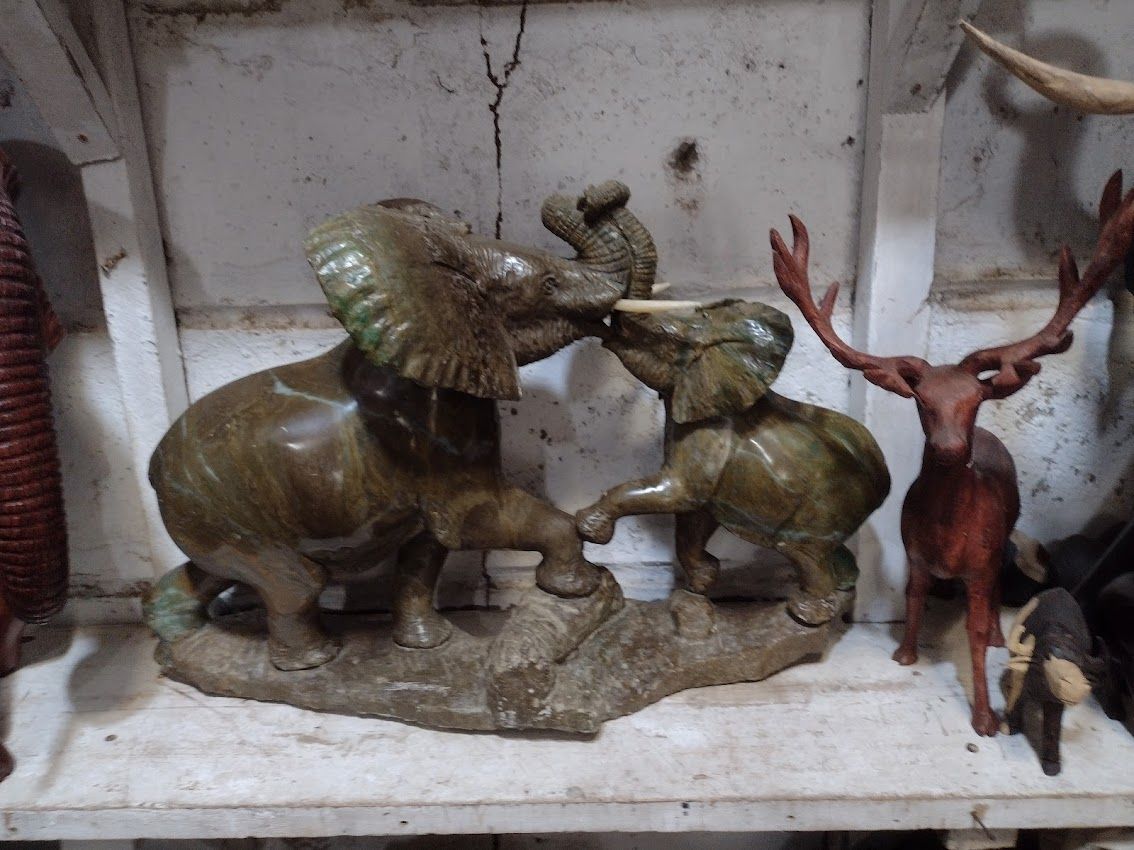
The trick to these markets, while it's not always easy, is to have done some serious shopping around to see what the other places charge. When someone starts WAY over your head, I end the negotiation. In all fairness to them, since I began my shopping twenty years ago, I have a different reference point for costs. I've had to update that, and take into account the raging inflation these folks are feeling as meat and milk and fuel skyrocket just as they have for us.
So while I balked a little at the price tag on these hand-made straw angels, they were too perfect a gift for a certain friend who loves such things.
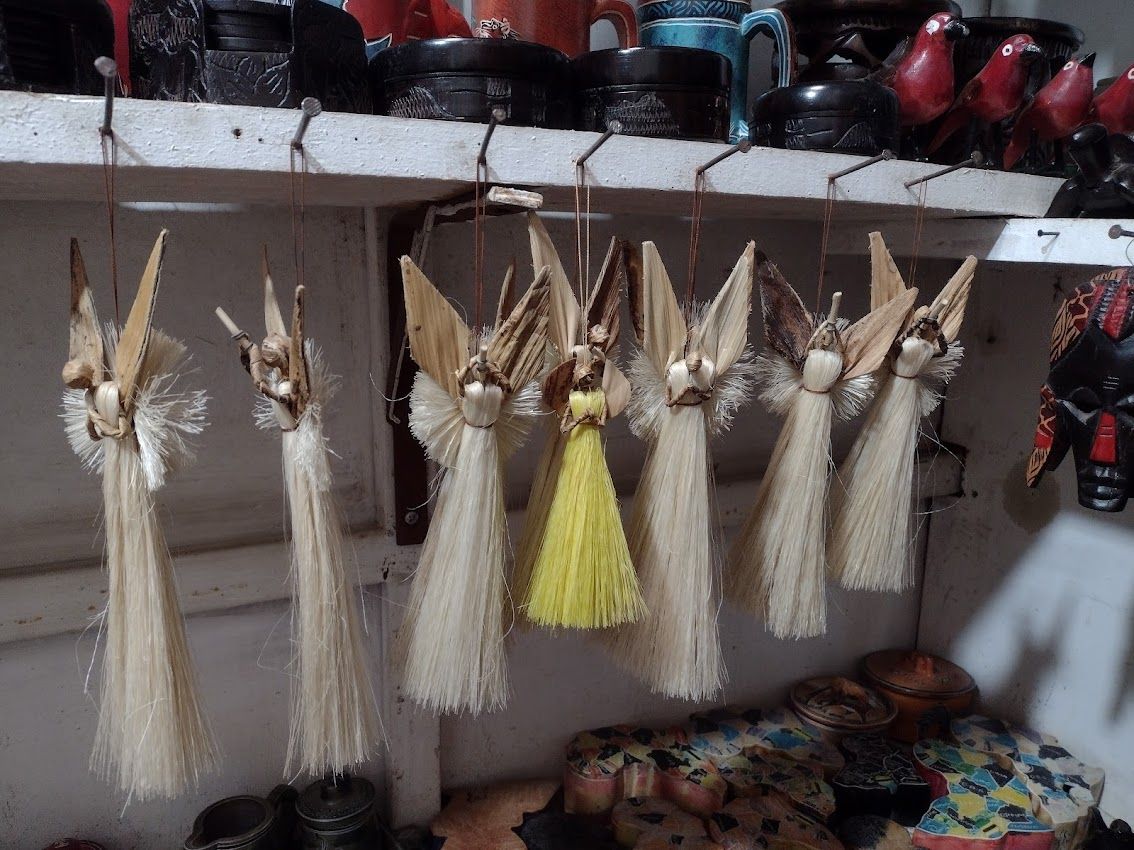
Outside and the back, more men were carving wood, while inside the women quietly asked us to step inside and buy. After we'd been there a while, with Eddie patient as the forest as I scanned and photographed, a few other tourists were also shopping. He was quick to explain my purpose as a reporter.
Suddenly there were more potential buyers than just myself. That allowed me to browse more slowly and appreciate some of the more special finds that I don't often see at local markets like this. If you're in the market, taking your time to really explore can uncover some collectibles (you can tell I like my collectibles large).
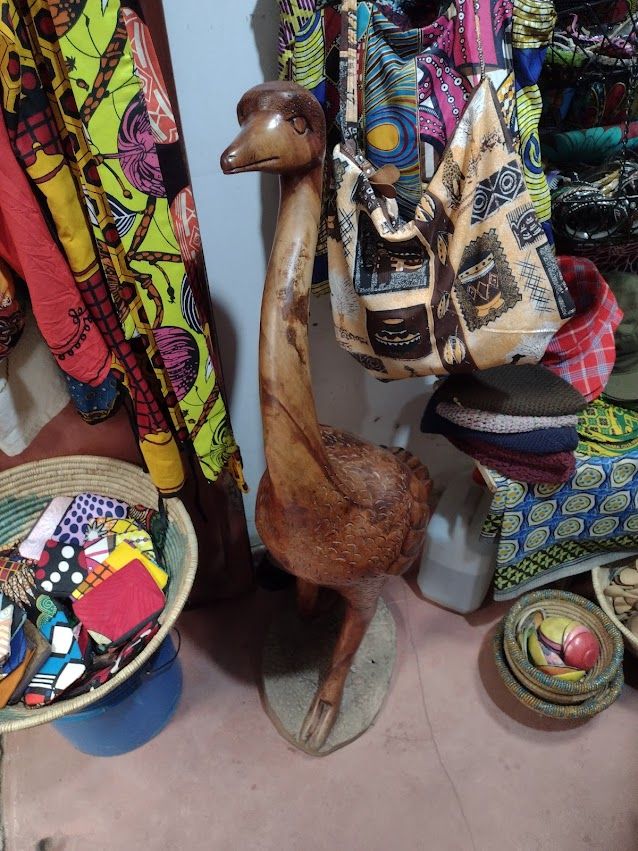
In the above photo you can see the colorful African cloth. Here I didn't find as much of the heavy waxed kind, which you buy by the bolt. The history behind it is that gossip was woven into the cloth and worn in the village, like a private conversation. The colors, especially against the red dirt of the African landscape in dry season, are stunning along with the colorful beadwork so typical of the Maasai.
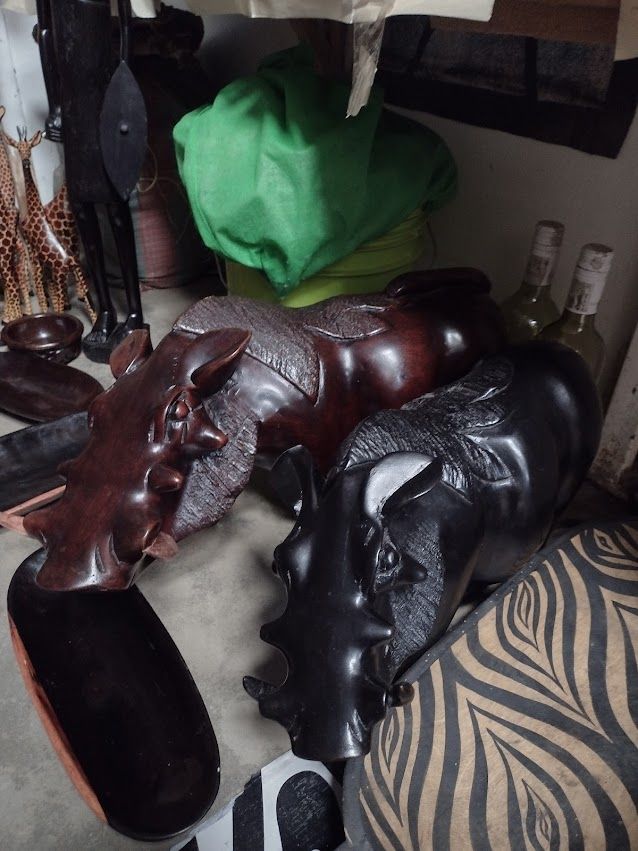
Here I photographed some of the better pieces of wood or stone carvings which I have seen selling for vastly more. I didn't check the prices on the above two, which were quite heavy, but here are some other samplings that I found both stunning and fairly-priced knowing what the tonier shops wanted for the same thing:
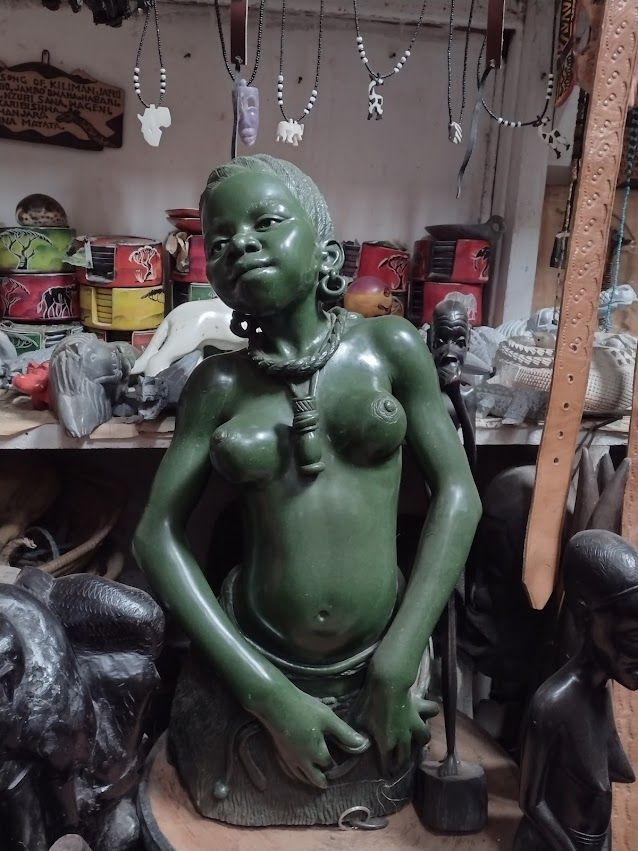
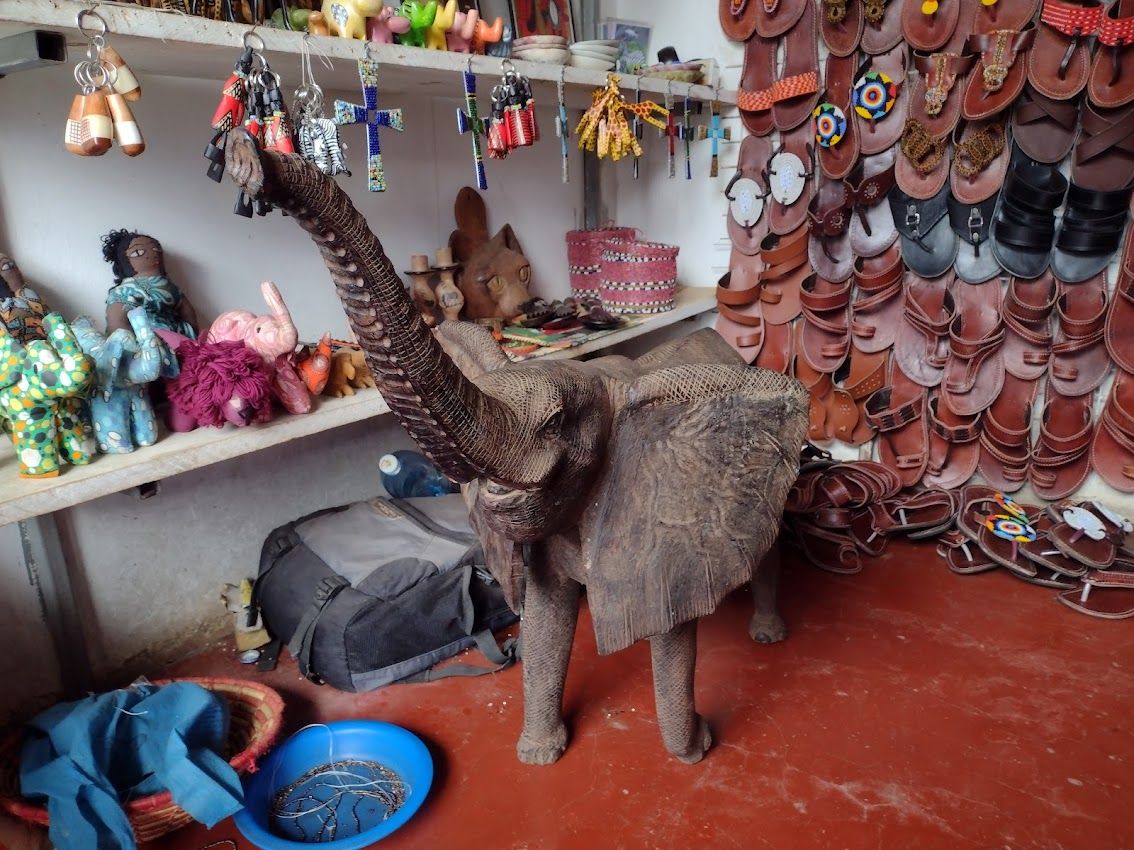
Here are a few other items which captured my attention for the simple reason that I usually see them at more pricey markets, and here you could bargain:
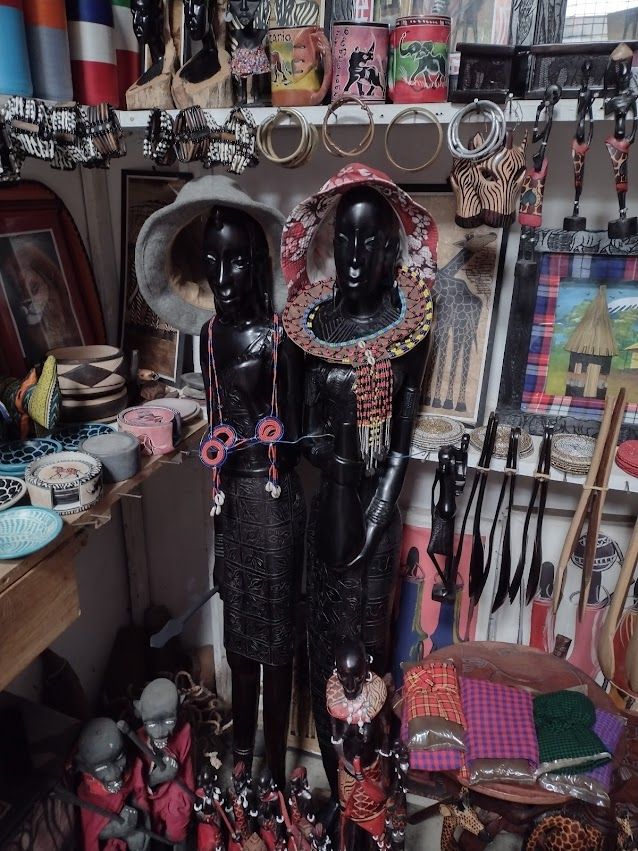
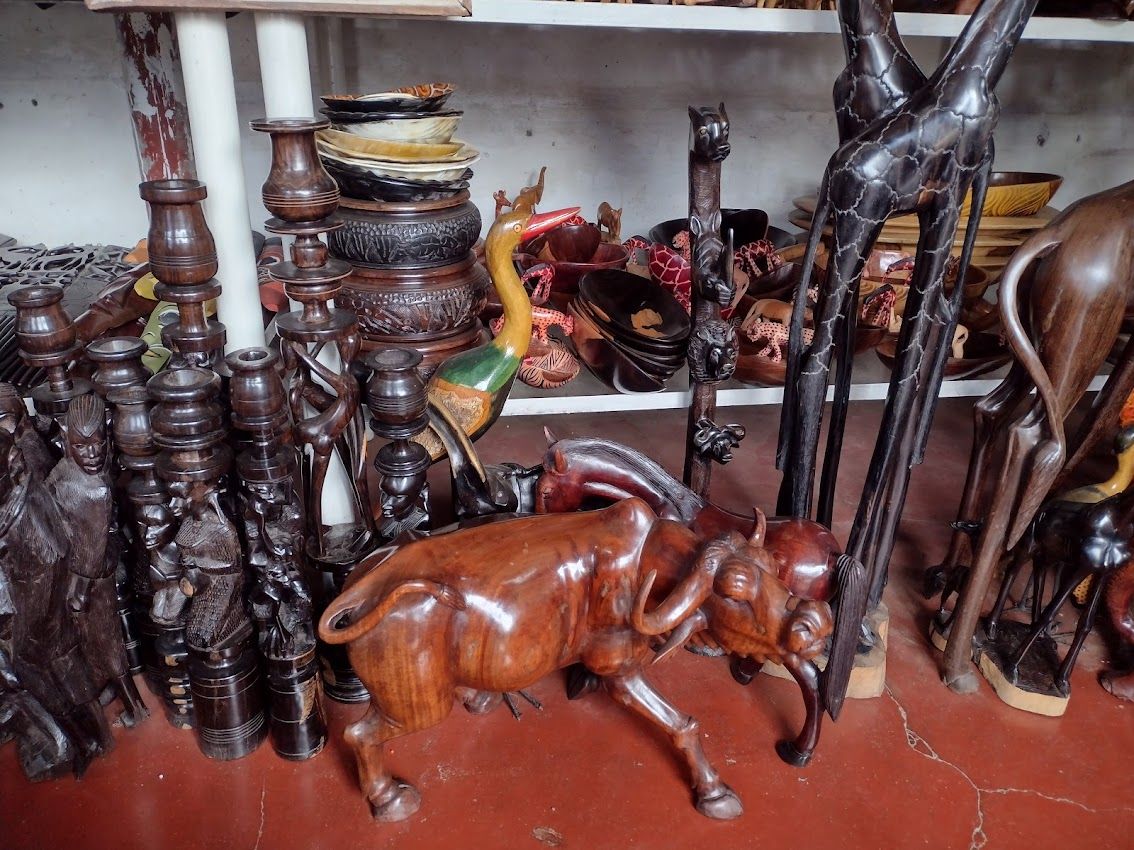
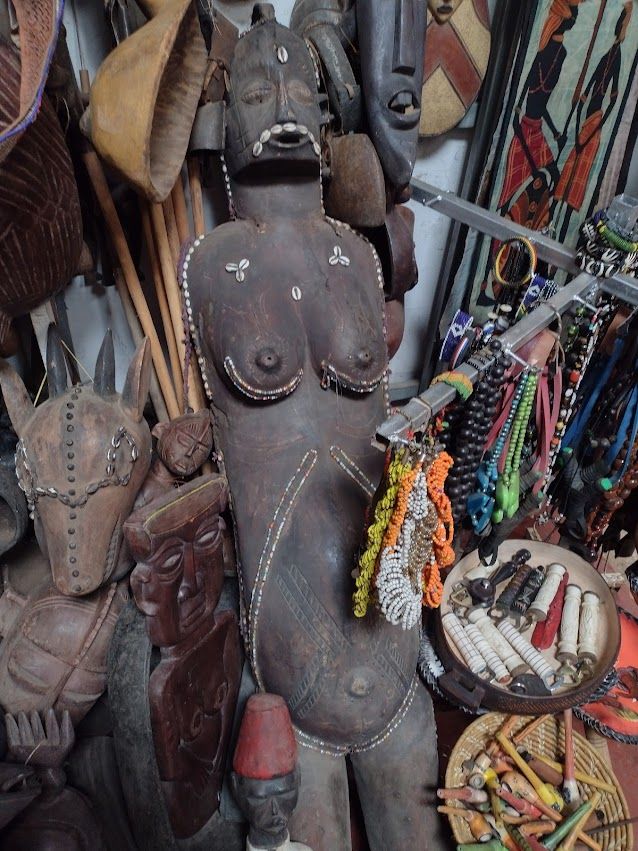
Only one shop featured antique items, which is where I prefer to buy. The proprietor wanted sky-high prices, which is now typical because people like the antique pieces, but we settled on an ancient, muddy bracelet. For me such items have history and life and I can feel that when I wear them.
We had an interesting negotiation on one bracelet. When I found out that her price was double what I thought I'd agreed to, I went to take my cash back. The woman had a death grip on my shillings, however, and relented. I got the bracelet while she pocketed the shillings. We grinned at each other, both happy.
By the way, the Tanzanian shilling doesn't give much advantage for the dollar. For example, I had a dinner which cost exactly the same over here as it does in the US. That was likely due to the restaurant, but when traveling, it pays to be mindful of how inflation has reduced the value of the currency exchange.
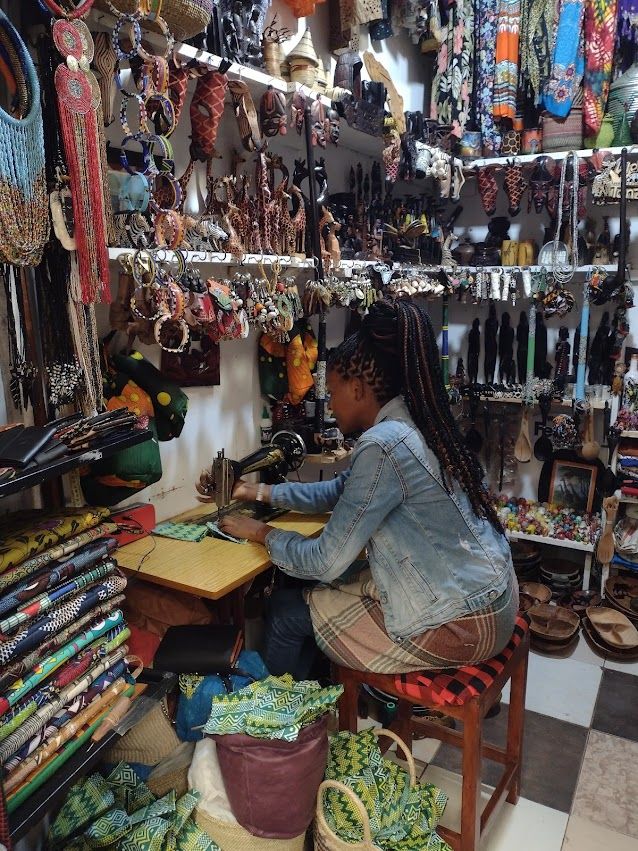
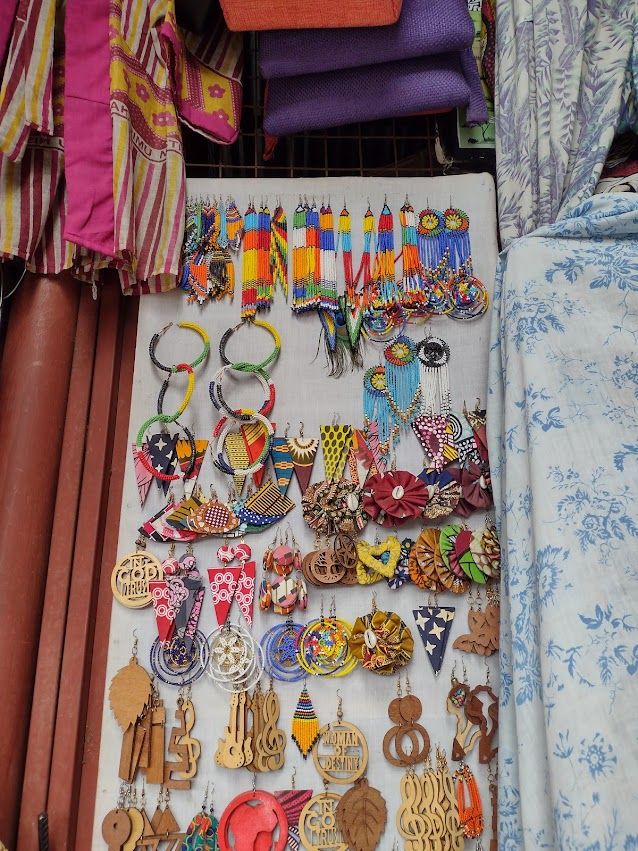
Then when we finally got back outside there were more people shopping with the various women who didn't have stalls. For me that was the best news of all.
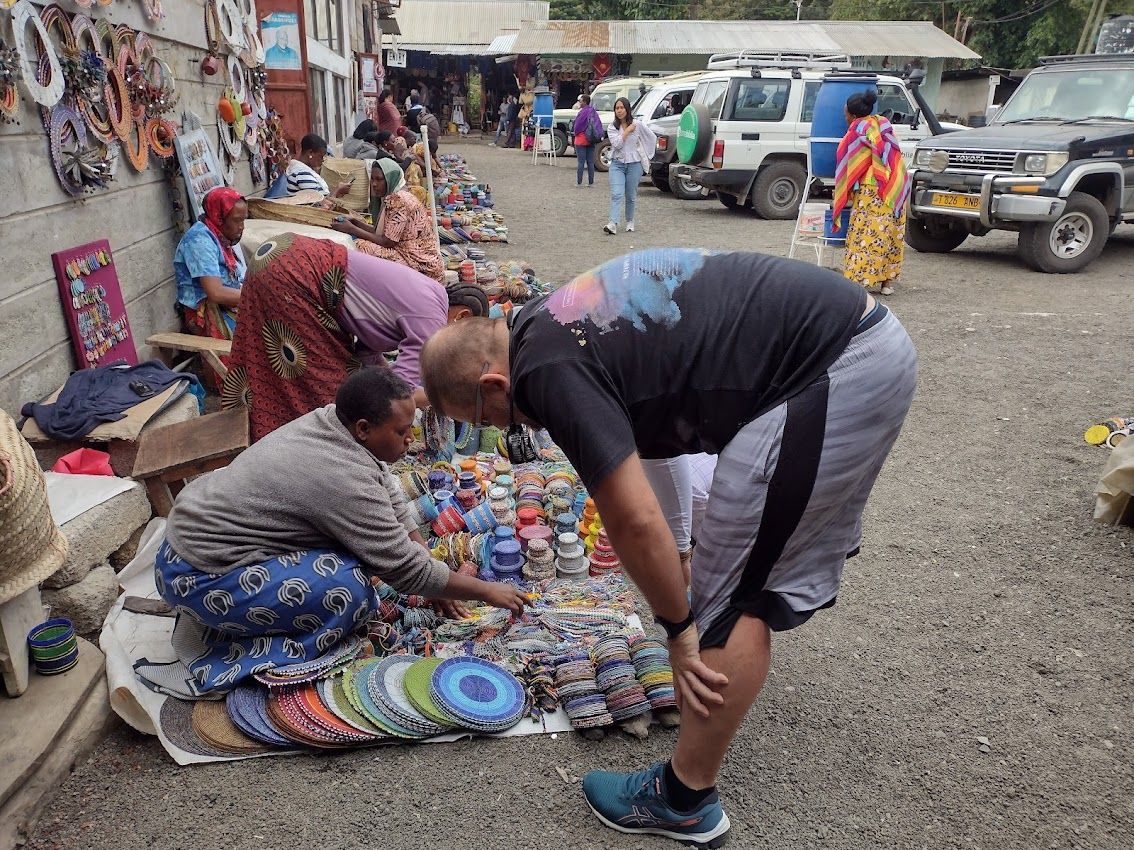
I would invite you to look carefully at the top two paintings, which were simply huge. They are expertly done, and worthy of any wall where someone can appreciate very realistic African renderings of animals I have seen up close and very personal. This is precisely what they look like.
In case you're wondering, I did go back and buy those cheetah eyes. they are rolled carefully, and coming home to watch over me in my bedroom.
***
Dear Walkabout Saga Reader:
If my work appeals to you, may I kindly invite you to consider joining those Patreon supporters whose generosity keeps the gas in my tank as it were. Those supporters get to dictate my content calendar, we engage as a community, and this website and its content acts in service to our collective best selves.
You can explore that option here.
However you decide to partake of my writing, thank you.
Comments powered by Talkyard.